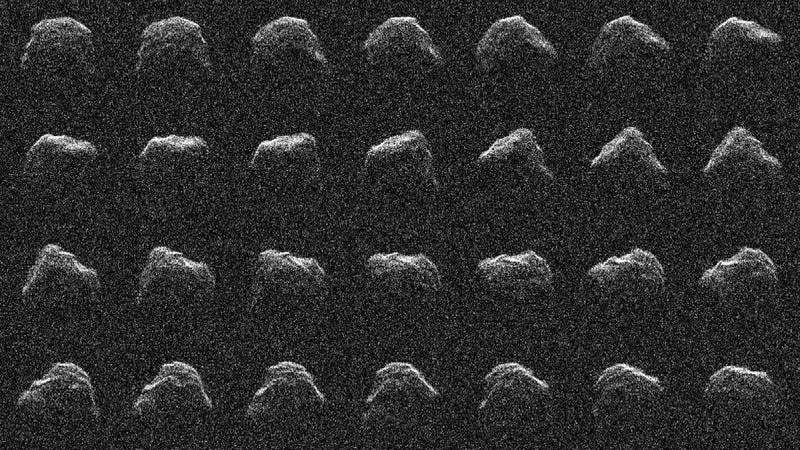A Skyscraper-Sized Asteroid Is Swinging by Earth Tomorrow (We’ll Be Fine)

An asteroid roughly as long as Chicago’s Willis Tower is tall is set to pass by Earth tomorrow. It poses no threat to our world, like it or not.
“Potentially hazardous” asteroids are routine interlopers in Earth’s neck of the solar system. Despite their alarming name, they typically pose no threat to Earth. They are asteroids considered large enough to survive passing through our planet’s atmosphere and cause regional (or larger) damage on the ground, according to NASA’s Jet Propulsion Laboratory.
Read more
Potentially hazardous asteroids make near approaches with some regularity and range in size from truck-size to house-size to skyscraper-size (and so on—headlines will ballpark the numbers in a variety of silly ways).
That’s also why when Gizmodo is covering near-Earth asteroids, we typically put the “we’ll be okay” bit in the headline. Near-Earth asteroids are a normal part of our local solar system, but also fodder for anxious readers. Or eager readers—when the asteroid 2021 KT1 passed within 4.6 million miles of Earth, a lot of you seemed remarkably disappointed.
The incoming (and passing) asteroid is named 2020 DB5, and it was first observed back in 1905. It’s expected to swing back our world on May 2, 2048, after passing Jupiter on November 10, 2024, according to NASA’s Jet Propulsion Laboratory.
NASA tracks near-Earth objects (or NEOs), including potentially hazardous asteroids. Its Center for Near-Earth Object Studies (CNEOS) tracks the orbital paths of tens of thousands of asteroids, comets, and other interplanetary rejectamenta. According to CNEOS, no asteroid larger than 460 feet across (140 meters) has a significant chance of hitting Earth in the next 100 years.
The successful Double Asteroid Redirection Test (DART) mission in September was conducted to test humankind’s ability to change an asteroid’s trajectory. The mission was conducted with the dreadful scenario in mind: a large asteroid barrelling towards Earth, which would cause catastrophic damage if it collided with our world.
Dimorphos, the moonlet that the DART spacecraft impacted (and successfully diverted from its orbit) was not on a collision course with Earth, but the mission showed that if needed, humankind could protect itself from at least similarly sized asteroids.
Other missions, like the HAARP experiment, use radio waves to probe asteroids making close passes of Earth, to prepare for close encounters with larger space rocks.
2020 DB5 is not the only asteroid passing by this week. The house-size (57-foot, or 17.4-meter) 2023 LZ will pass within 200,000 miles of Earth today, and the plane-size (99-foot, or 30-meter) 2023 LW will pass within 1.44 million miles of our planet on June 18, according to NASA’s asteroid watch. In May alone, seven near-Earth asteroids passed closer to Earth than the Moon, according to NASA.
Near-Earth objects—including potentially hazardous asteroids—are a normal part of Earth life, whether you hear about the objects or not. And when an asteroid actually looks like it might veer toward our planet…well, that’s exactly why NASA tracks tens of thousands of them.
More: Who Protects Earth From Asteroids?
More from Gizmodo
Sign up for Gizmodo's Newsletter. For the latest news, Facebook, Twitter and Instagram.

